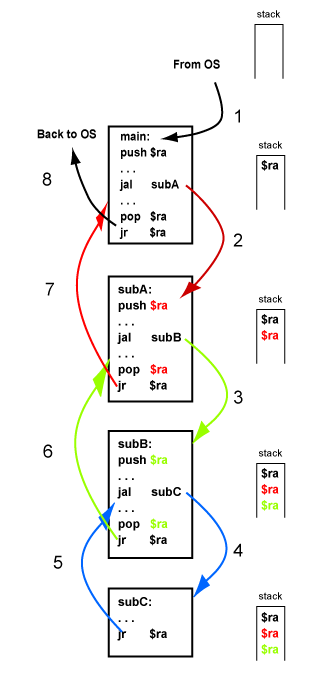Yes. The same trick (pushing the return address onto the stack) can be repeated many times.

Now let us look at an example where subroutines call other subroutines. A subroutine that might call another subroutine must push the return address it gets onto the stack. When it returns to its caller, it pops the stack to get the return address it should use.
In the picture,
main is called by the OS.
As soon as
main gets control
it pushes $ra onto the stack (step 1).
main computes for a while
and then calls
subA.
subA immediately pushes
the contents of
$ra
onto the stack (step 2).
The return address that subA
will use when it returns control to main
is now on the top of the stack.
Next
subA calls
subB which pushes
the contents of $ra onto the stack (step 3).
The return address that subB
should use when it returns to its caller
is now on the top of the stack.
Now
subB calls
subC (step 4).
subC does not
call any subroutine so
$ra does not have to be saved.
subC computes for a while,
and then returns to its caller
with a jr $ra instruction (step 5).
Now subB has control again.
The return address it needs to use is at
the top of the stack.
subB returns to its caller
by popping the stack into $ra and
executing jr $ra (step 6).
Now subA has control again.
The return address it needs to use is at
the top of the stack.
subA returns to its caller
by popping the stack into $ra and
executing jr $ra (step 7).
Finally,
main
has control.
After a computing for a while it returns
to the OS by popping the stack into $ra
and using the jr $ra instruction (step 8).
After subA
returns control
to main,
could main
call another subroutine?